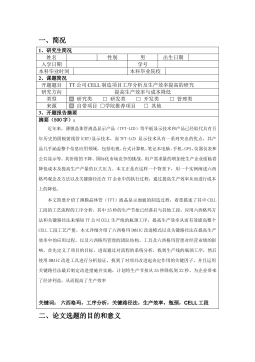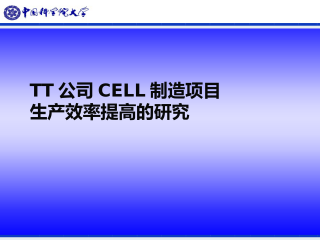
Frequency Domain Packet Scheduling Under
Fractional Load for the UTRAN LTE Downlink
A. Pokhariyal†, G. Monghal†, K. I. Pedersen‡, P. E. Mogensen†,‡, I. Z. Kovacs‡, C. Rosa‡ and T. E. Kolding‡
† Aalborg University, ‡ Nokia Networks — Aalborg, Denmark
Abstract— In this paper we investigate the performance of
frequency domain packet scheduling (FDPS) under fractional
load (FL), based on the UTRAN Long Term Evolution downlink.
Under FL, the packet scheduler does not need to transmit on
entire system bandwidth due to lack of traffic in the network,
which leads to an improvement in the user experienced SINR.
System-level simulations show that the proportional fair sched-
uler tries to optimize resource allocation by avoiding transmission
on frequencies that are experiencing severe interference. As an
example, FDPS can provide a gain of 4 dB in SINR over the
round-robin scheduler, when the load is equal to 25%. The
observed interference control is achieved without any centralized
management. Further, FDPS under FL can provide an effective
trade-off between cell throughput and coverage. The FDPS
performance is dependent on the ability of link adaptation to
track variations in interference. This ability is reduced when the
frequency usage pattern is changing rapidly over time.
I. INTRODUCTION
The downlink radio access of the 3GPP UTRAN long term
evolution (LTE) will be based on the orthogonal frequency
division multiple access (OFDMA) scheme. The guidelines for
the Physical layer design are described in [1]. As LTE sup-
ports frequency-domain adaptation techniques in downlink we
will investigate the performance of frequency domain packet
scheduling (FDPS), which refers to fast channel dependent
scheduling in both time and frequency domains. Previous
FDPS studies [2], [3], [4] indicate that it has significant
potential over time-domain only scheduling, e.g. in [4] it is
reported that FDPS can provide a gain of around 40% in cell
throughput. The main drawbacks of FDPS are high scheduler
complexity and increased signaling overhead in the uplink as
well as in the downlink. Previous FDPS studies are based on
the full load scenario.
As OFDMA can provide intra-cell orthogonality by means
of the cyclic prefix, the main source of interference in down-
link is inter-cell interference (ICI) [5]. It can severely limit the
throughput of users near the cell edge, in a reuse 1 network
with continuous coverage. When the network is experiencing
a lack of traffic, the packet scheduler optimizes resource
allocation by transmitting only on a portion of the system
bandwidth. This leads to a reduction in ICI and thereby an
improvement in SINR, which can be particularly useful to
cell-edge users as their data rate can be improved. The focus
of this study is the investigation of FDPS under the fractional
load (FL) scenario.
We assume that there is no co-ordination between the
entities responsible for resource allocation in the neighboring
cells. The analysis is based on a detailed LTE system-level
Fig. 1. Interaction between PS, LA, and the HARQ manager entities of the
eNode-B that are responsible for dynamic resource allocation.
model, developed according to the guidelines given in [1]. The
important scheduling related functions such as link adaptation
(LA) and HARQ have been modeled explicitly. Further, as
the FDPS performance is sensitive to the accuracy of channel
quality indication (CQI) reports, realistic assumptions for
achievable CQI accuracy and reporting frequency have been
used [4].
The paper is organized as follows: Section II describes the
interaction between the different functional entities involved
in packet scheduling. It also covers the description of the LA
functionality and the FDPS algorithm. Section III provides
details on the system-model as well as describes the modeling
of FL. Section IV covers the results and analysis, while the
conclusions are summarized in Section V.
II. PACKET SCHEDULING FRAMEWORK
Fig. 1 illustrates the interaction between the different entities
involved in packet scheduling (PS), which are located at
the base station (eNode-B) in order to facilitate fast channel
dependent scheduling [6]. Following LTE naming convention
the basic time-frequency resource available for data transmis-
sion is denoted as the physical resource block (PRB). The
PRB consists of a fixed number of adjacent OFDM sub-
carriers and represents the minimum scheduling resolution in
the frequency domain [1]. The PS is the controlling entity in
the overall scheduling process. It can consult the LA module
to obtain an estimate of the supported data rate for certain
users in the cell, for different allocations of PRBs. LA utilizes
1550-2252/$25.00 ©2007 IEEE 699

 2024-10-14 24
2024-10-14 24
 2025-01-09 7
2025-01-09 7
 2025-01-09 10
2025-01-09 10
 2025-01-09 6
2025-01-09 6
 2025-01-09 7
2025-01-09 7
 2025-01-09 8
2025-01-09 8
 2025-01-09 7
2025-01-09 7
 2025-01-09 9
2025-01-09 9
 2025-01-09 7
2025-01-09 7
 2025-01-09 8
2025-01-09 8










